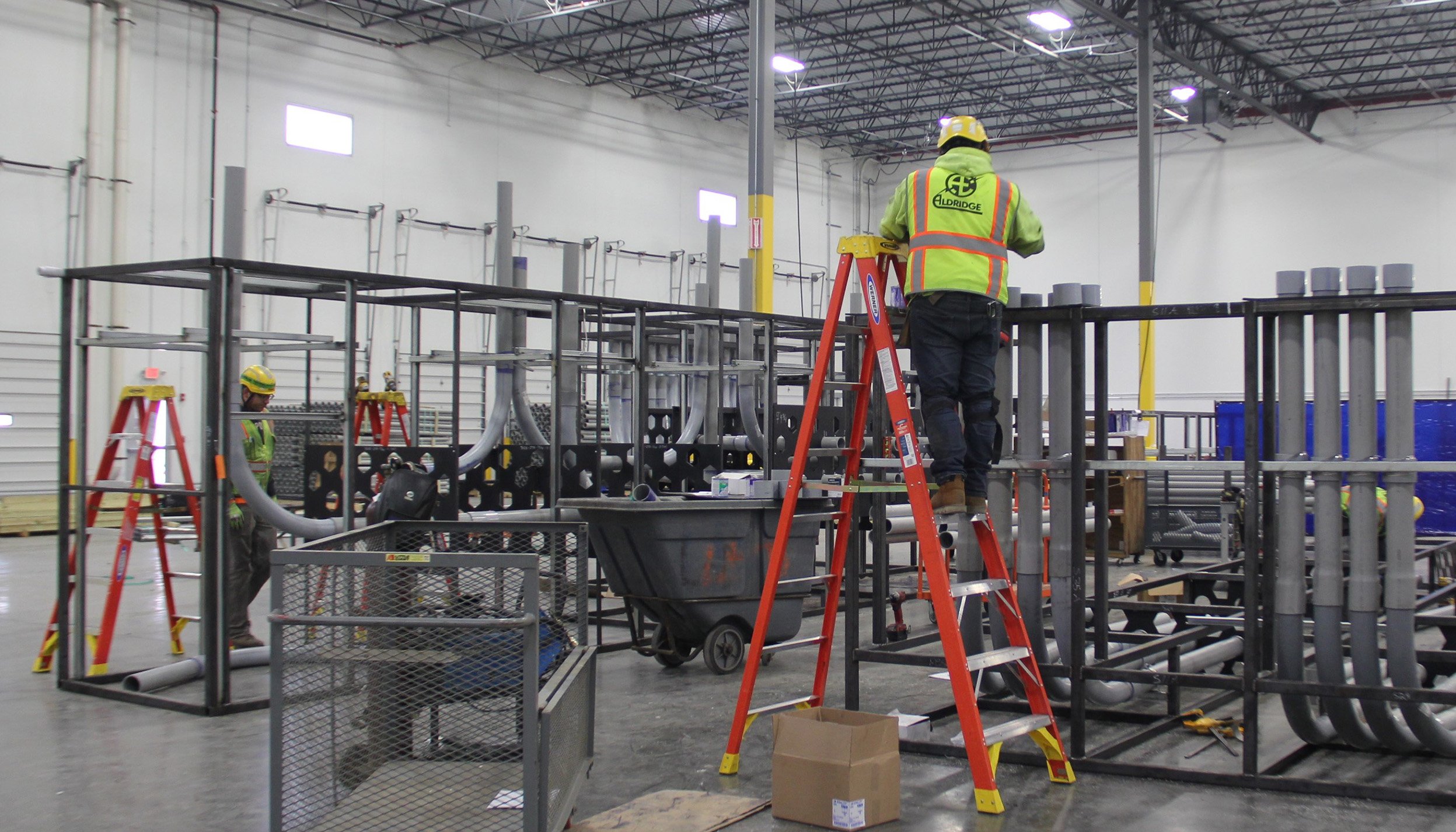March is Ladder Safety Month. Ladders are an essential tool used on most job sites. To ensure safe use at all times, Aldridge has developed a comprehensive ladder safety policy.
5 Simple Ladder Safety Tips
Choose the right ladder & check the weight rating.
Always inspect the ladder before using it.
Make sure the ladder is stable before beginning to climb it.
Make sure that you stay stable as you climb or stand on a ladder.
Do not carry items with you as you climb the ladder.
Aldridge Ladder Policy
Employees who are required to utilize any type of ladder must be provided training on ladder safety before using a ladder. Except where either permanent or temporary stairways, ramps, man hoists, or runways are provided, ladders meeting the requirements of this must be used to provide access to all elevations.
Portable metal ladders must not be used for any electrical work or be permitted in substations, switchyards, power plants, pumping plants, or in any area where contact can be made with energized circuits. Only fiberglass or non-conductive material must be used at the above types of workplaces.
Prior to use, a ladder inspection must be performed by a competent person designated by the Project Manager. If the ladder fails the inspection, it must be labeled with a “DO NOT USE” tag. The ladder inspection must be completed by a competent person.
All ladders must be secured at the top and at the bottom and intermediate positions necessary to maintain them rigidly in place and to support the loads imposed upon them.
Ladders must not be used as work platforms or scaffolding or as structured members of scaffolds or work platforms or walkways. Boxes, chairs, etc., must not be used as ladders.
Directions for Use
Employees must face ladders when ascending or descending ladders. Three points of contact must be maintained at all times.
At least one hand must be used to grasp the ladder when progressing up and/or down the ladder.
An employee must not carry any object or load that could cause the employee to lose balance and fall.
Ladders must be maintained free of oil, grease, and other slipping hazards.
Ladders must not be loaded beyond the maximum intended load as specified by the manufacturer’s specifications.
Ladders may only be used for the purpose they were designed.
Ladders must only be used on stable and level surfaces unless secured to prevent accidental displacement.
Ladders must not be placed in accessways or other locations where they may be displaced unless protected by barricades or guards.
The area around the top and bottom of the ladder must be kept clear.
Ladders must not be moved, shifted, or extended while occupied.
The top or top step of a step ladder must not be used.
Ladders must be inspected for visible defects prior to each use.
Aldridge Fall Protection Policy
As part of our Safety Absolutes, Fall Protection is listed as a safe work practice, that if violated, would most likely result in death or serious physical harm. Everyone at Aldridge has a duty to themselves and their co-workers to be constantly aware of potentially hazardous conditions. When hazardous conditions are noted, proper action must be taken to eliminate the hazard.
Fall protection is one of those hazards. Employees must utilize a personal fall protection system whenever any of the following conditions exist:
• Three points of contact cannot be maintained, or
• The job task requires the employee to lean out beyond the side-rails of the ladder, or
• While working next to a leading-edge without guardrail protection.
This includes, and is not limited to, the use of ladders that meet these requirements.
These are intended to be guidelines for providing the safest use of ladders. There are many different circumstances that require additional considerations not listed here. Always check with the manufacturer's recommendations prior to use.
Learn more at:https://www.americanladderinstitute.org/page/BasicLadderSafety





